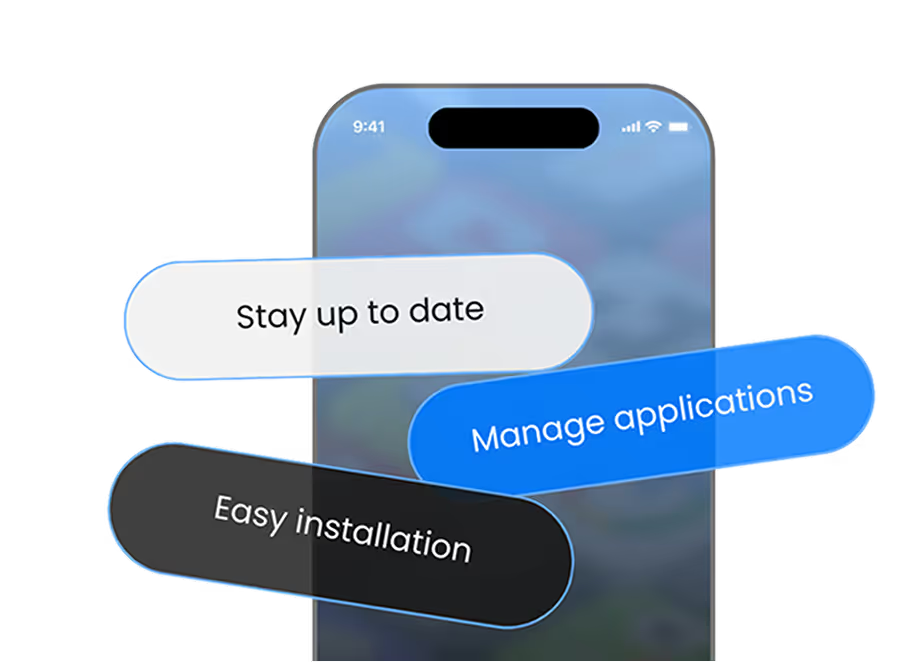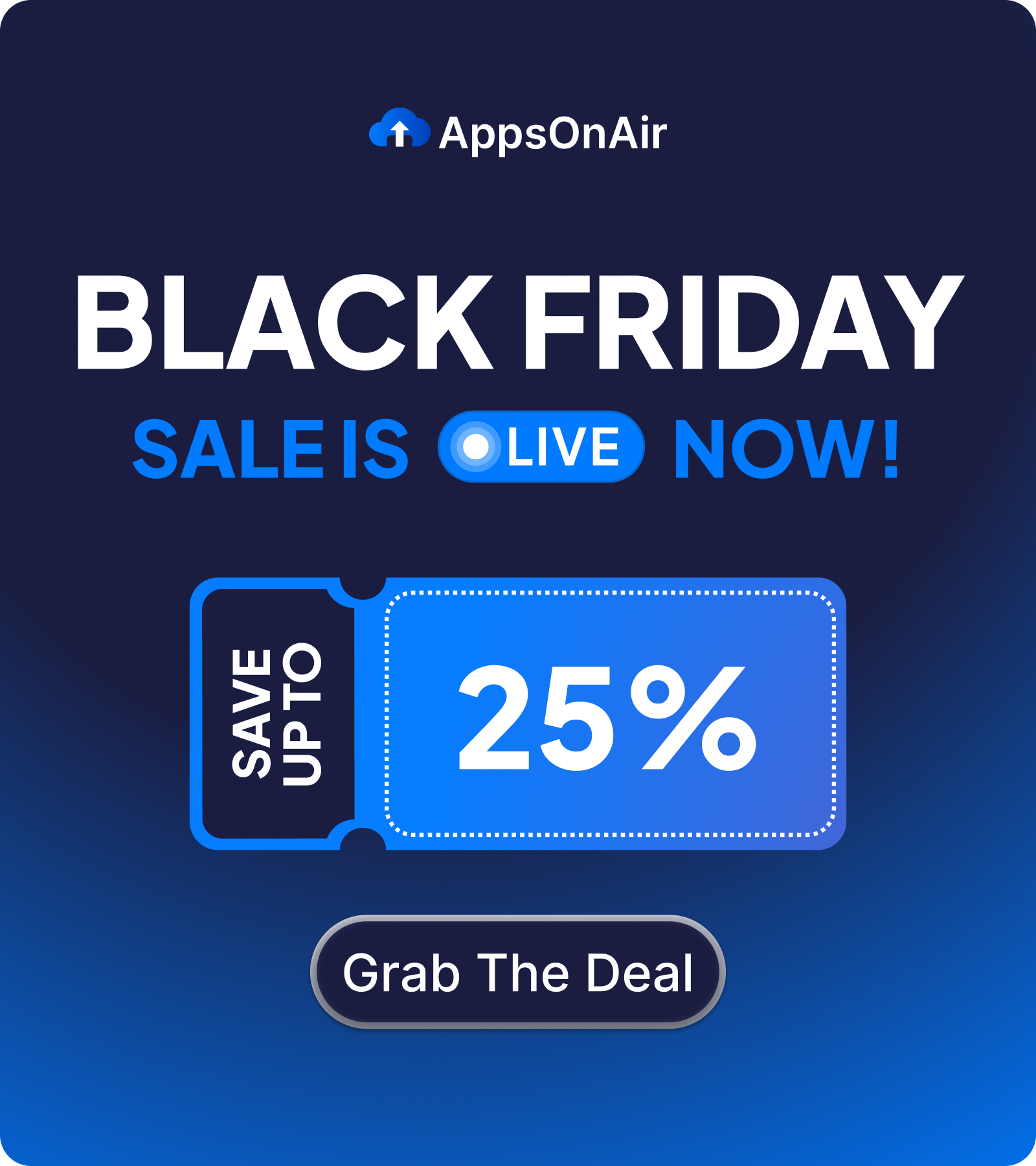
In today’s mobile-first world, customers don’t just interact with brands through websites. They expect smooth, personalized, and direct journeys, whether they start on an email, a social ad, a QR code, or even a push notification. This is where deep linking comes into play.
Deep linking ensures that when users click a link, they land on the exact content you want them to see, inside your app, across platforms, or on the web. It bridges the gap between marketing touchpoints and in-app experiences. But with so many deep linking providers in the market, how do you choose the right one for your business?
This blog dives deep into what deep linking is, why it matters for marketing, the must-have features of a solution, and how to evaluate different providers.
What is Deep Linking?
At its core, deep linking is the practice of sending users to a specific location inside your app instead of just launching the app’s home screen or redirecting to an app store.
For example:
- Clicking on a product ad for sneakers should take a user directly to that sneaker’s product page inside your app, not just the homepage.
- A referral link sent by a friend should open the signup page with the referral code pre-applied.
Deep links can work across:
- Mobile apps (iOS, Android)
- Websites
- Email campaigns
- Social media ads
- QR codes and offline campaigns
When done right, deep linking provides a seamless user journey, eliminates friction, and drives higher conversions.
Why Deep Linking is Critical for Marketing
Choosing the right deep linking solution isn’t just a technical decision, it’s a marketing strategy. Here’s why:
a) Improved User Experience
No one likes being dropped on a homepage and asked to “search again.” Deep links deliver users exactly where they expect to be, improving satisfaction and reducing bounce rates.
b) Higher Conversions
By reducing steps in the customer journey, you’re removing friction. Whether it’s completing a purchase, signing up, or engaging with a promotion, deep links directly improve conversion rates.
c) Better Attribution & Tracking
Modern deep linking platforms often provide analytics, allowing marketers to track link performance, campaign ROI, and user behavior.
d) Personalization at Scale
Deep links can carry data, like referral codes, promo offers, or campaign identifiers, enabling personalized onboarding and targeted messaging.
e) Cross-Channel Consistency
From social ads to emails to SMS campaigns, a unified deep linking solution ensures users get a consistent experience across all touchpoints.
Types of Deep Links
Before evaluating solutions, it’s important to understand the different types of deep links:
1) Traditional Deep Links
1. Work only if the app is already installed.
2. Example: Clicking a Spotify link opens directly inside the Spotify app (if installed).
3. Limitation: Breaks if the app isn’t installed.
2) Deferred Deep Links
1. If the app isn’t installed, they first take the user to the app store. After installation, the user is directed to the intended content inside the app.
2. Useful for acquisition campaigns.
3) Contextual Deep Links
1. Carry additional data (promo codes, referral IDs, user preferences).
2. Useful for personalized onboarding, referrals, and tracking campaign-level data.
The right solution should ideally support all three.
Key Features to Look for in a Deep Linking Solution
When evaluating deep linking providers, focus on the following features:
a) Cross-Platform Support
- iOS and Android app support is a must.
- Should also handle fallback for desktop users (redirect to website).
b) Deferred Deep Linking
- Essential for acquisition campaigns.
- Look for seamless install + redirect flow.
c) Contextual Data Handling
- Ability to pass parameters like referral codes, campaign IDs, and promo offers.
- Enables personalized onboarding.
d) Robust Analytics & Attribution
- Insights into clicks, installs, re-engagement, and conversions.
- Integration with tools like Google Analytics, AppsFlyer, or Mixpanel is a plus.
e) Ease of Integration
- SDKs and APIs for mobile developers.
- Clear documentation.
- Low maintenance overhead.
f) Scalability
- Should handle growing traffic and link volume without performance issues.
g) Security & Compliance
- GDPR/CCPA compliance.
- Fraud prevention (avoid hijacked links or spam traffic).
h) Link Management Dashboard
- Easy-to-use interface for marketers to create, edit, and manage links without always needing developers.
Evaluating Deep Linking Providers
Now let’s look at the evaluation framework:
Step 1: Define Your Marketing Goals
- Do you want to improve acquisition (new installs)?
- Or focus on retention and engagement (taking existing users back into the app)?
- Or maybe both?
Your goals determine which features are non-negotiable.
Step 2: Check Integration Complexity
- Does the SDK integrate easily with your app?
- How much developer effort is required to maintain it?
Step 3: Compare Analytics Capabilities
- Does the provider offer real-time insights?
- Can you integrate with your preferred attribution/analytics tool?
Step 4: Assess Scalability & Reliability
- Check reviews, case studies, and uptime guarantees.
- Can the platform handle millions of links per month without downtime?
Step 5: Look at Pricing
- Some platforms charge per click, others per monthly active user, and some offer tiered plans.
- Match pricing with your growth stage (startup, mid-size, enterprise).
Step 6: Evaluate Support & Documentation
- How responsive is the support team?
- Is the documentation developer-friendly?
Why AppLink by AppsOnAir is the Right Choice
While there are several deep linking providers in the market, not all are built with today’s marketing challenges in mind. Some are expensive and complex to integrate, while others are being discontinued altogether (like Firebase Dynamic Links).
This is where AppLink by AppsOnAir stands out.
a) Easy Migration from Firebase Dynamic Links
If you’re currently using Firebase Dynamic Links, you already know Google is sunsetting it by August 2025. AppLink makes migration painless with its import tool, allowing you to transfer all your existing links in minutes, without breaking campaigns or losing tracking data.
b) Seamless Deferred and Contextual Deep Linking
AppLink supports all the key deep link types, traditional, deferred, and contextual. That means whether you’re running acquisition campaigns, onboarding new users with referral codes, or re-engaging dormant customers, AppLink ensures a frictionless experience.
c) Built for Marketers and Developers
- For marketers: A simple dashboard to create, manage, and track links without depending on developers.
- For developers: Lightweight SDKs, clean documentation, and minimal setup time.
This balance makes AppLink both powerful and easy to adopt.
d) Reliable and Scalable
Whether you’re handling hundreds or millions of links per month, AppLink is designed to scale with your app. Its robust infrastructure ensures uptime, speed, and accurate link routing, so your campaigns never miss a beat.
e) Actionable Analytics
AppLink goes beyond just “clicks.” You get insights into installs, conversions, and re-engagements, helping you measure ROI across channels. Plus, it integrates easily with your existing analytics stack.
f) Cost-Effective Plans
Unlike some enterprise-focused solutions that quickly become expensive, AppLink offers transparent pricing plans designed for independent developers, growing teams, and large-scale enterprises. You pay for what you use, no bloated costs.
How Marketers Use AppLink
Here are some real-world ways marketers leverage AppLink in their strategy:
- Ad Campaigns → Send users from Facebook/Google/Instagram ads directly into specific in-app product or offer pages.
- Onboarding & Referrals → New users who install via referral links automatically get credits or discounts applied.
- Email & SMS Campaigns → Personalized links guide users back to abandoned carts or promotional offers inside the app.
- QR Codes in Offline Marketing → From posters to packaging, QR codes powered by AppLink lead users into the exact app page you want.
Case Study: Migrating from Firebase to AppLink
Let’s imagine a food delivery app running on Firebase Dynamic Links. With the shutdown date approaching, the team decides to migrate to AppLink.
- They import all their existing deep links in just a few clicks.
- Deferred deep linking ensures new installs land on the right restaurant or menu item.
- Contextual data allows them to pass coupon codes seamlessly during onboarding.
- Analytics shows which campaigns drive the highest order values.
Result? The migration takes less than a day, users enjoy a frictionless journey, and the marketing team gets better visibility into performance.
Why Now is the Best Time to Switch
With Google sunsetting Firebase Dynamic Links, many app owners will be forced to rethink their strategy in the coming months. Waiting until the last moment risks campaign disruption. By switching early to AppLink:
- You secure continuity for your campaigns.
- You get time to experiment and optimize with the new platform.
- You future-proof your marketing stack with a reliable, actively supported solution.
Final Thoughts
Choosing the right deep linking solution isn’t just about technology; it’s about ensuring seamless user journeys, reliable tracking, and long-term scalability for your marketing strategy.
While there are other options in the market, AppLink by AppsOnAir combines the essentials, easy migration, developer-friendly setup, marketer-focused dashboards, analytics, and cost-effective pricing into one complete package.
If you’re serious about improving conversions, personalizing user journeys, and preparing for a post-Firebase future, AppLink is the partner you’ve been looking for.
Ready to migrate your deep links? Switch to AppLink today















